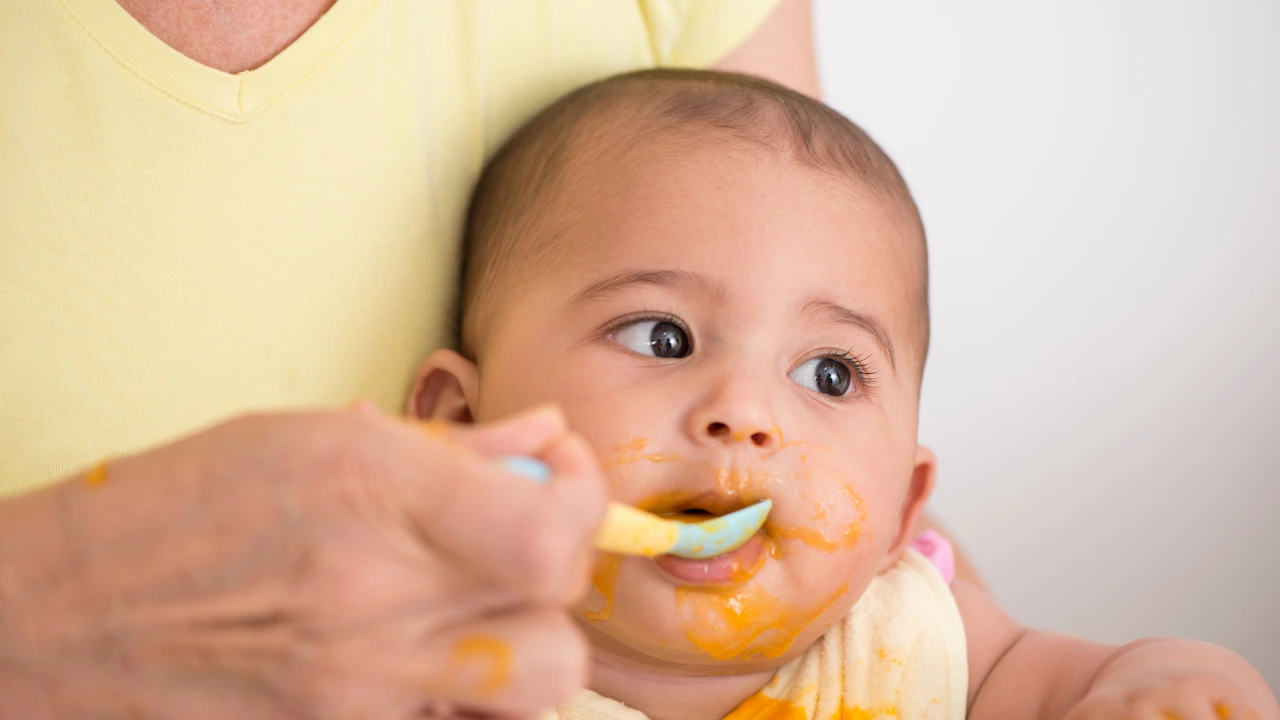
Spicy foods. You can introduce herbs and many spices as soon as your baby starts eating finger foods (usually around 8 to 10 months) – just don’t add salt or sugar to their food. You want your baby to get used to the natural flavors of food and be willing to eat food that isn’t heavily salted or sugared.
You can introduce new flavors into your baby’s diet with spices like turmeric and cumin; herbs such as basil, oregano, and thyme; or by adding small amounts of flavorful foods such as onion, garlic, and ginger. All of these not only add flavor to your baby’s food, but texture and color, too.
Don’t use spices too heavily at first. Begin with mild spices like cinnamon and nutmeg. Other spices you can introduce are cumin, paprika, cardamom, cloves, and ginger. You can also season their food with a little bit of black pepper.
You may have raised your child’s tolerance for hot stuff if you ate spicy food while breastfeeding – trace flavors and substances pass through your breast milk. But wait until your baby is at least a year old before you add curry, chili pepper, hot peppers like jalapeno or habanero, or other strong flavors to your child’s diet. Children younger than a year are just getting used to basic foods and are especially prone to food reactions and sensitivities.
Also think about how your baby typically reacts to new foods. If your child is more sensitive, stick to blander fare for a while. Though they rarely trigger food allergies, spicy foods can irritate the digestive system and cause gastroesophageal reflux. If your child has gastroesophageal reflux, you may need to avoid spicy foods all together.
As you introduce stronger flavors, serve small amounts of foods you know your child can tolerate. That way, if they get an upset stomach, you’ll be able to identify the culprit – and know to wait until they’re older to try serving it again.
Are spices good for babies?
While it isn’t clear exactly what role spices play in health, spices and herbs have been used for medicinal purposes across many cultures for a long time. While your baby probably won’t eat enough spices in a sitting to have direct health benefits, it’s possible that having a variety of spices and herbs over their lifetime could influence their health.
Introducing your child to a variety of flavors early on might also help them be open to trying and eating a variety of foods in their lifetime.
Can babies be allergic to spices?
It’s possible for your baby to be allergic to spices, although it’s usually an intolerance rather than an actual allergy. Life-threatening, anaphylactic reactions to spices are extremely rare, but it’s important to know signs of an allergic reaction just in case.
Signs of a food allergy include hives, itchy skin rashes, swelling, sneezing, nausea, vomiting, diarrhea, and pale skin. If you notice any of these symptoms in your baby, take note of what they’ve eaten and let their doctor know. If your baby has symptoms in more than one part of their body (such as hives and vomiting or diarrhea), it could be an anaphylactic reaction, which is an emergency.
Other signs of an anaphylactic reaction are throat tightness, breathing problems, wheezing, lightheadedness, and loss of consciousness. If your baby shows signs of an anaphylactic reaction, call emergency number or go to an emergency room immediately.
How to introduce spicy into your baby’s diet
There are many ways you can introduce spicy into your baby’s diet. If you use spices when preparing your meals at home, feed your baby what the rest of the family is eating. Your baby could also try cinnamon in pureed apple, nutmeg with baked sweet potato, cardamom in baked goods, paprika on chicken, or cumin with beans.
You can also incorporate fresh or dried herbs, such as basil, mint, oregano, and rosemary. Cooking with onion, garlic, and ginger is also a great way to introduce new flavors to your little one.


Add a Comment